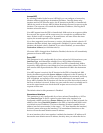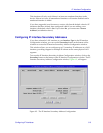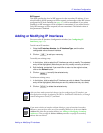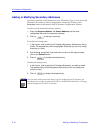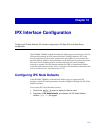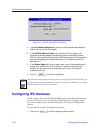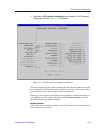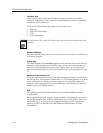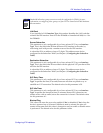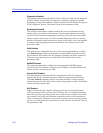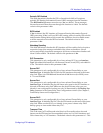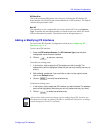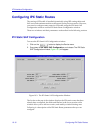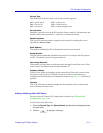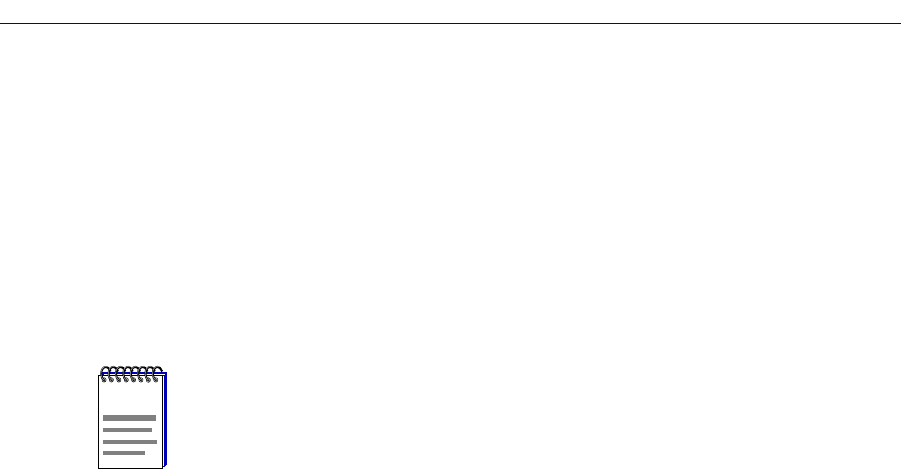
IPX Interface Configuration
10-4 Configuring IPX Interfaces
Interface Type
In this Þeld, use the menu button to select the type of interface you wish to
conÞgure. Depending on your selection, certain parameters will be conÞgurable,
and others will be grayed out.
There are four IPX interface types that you can select from:
¥ Ethernet
¥ Eight 025 (Token Ring)
¥ X.25
¥ Frl (Frame Relay)
Network Address
This Þeld identiÞes the local interface to the Novell network. Enter an address up
to 10 digits in length.
Frame Type
This Þeld depends on the Interface Type you have selected. If you have selected
Ethernet or Token Ring as your interface type, you can use the menu button to
select one of the following four frame types: Type II, Raw, Llc, or Snap. If you
have selected Frame Relay or X.25 as your interface type, your only option is Type
II.
Maximum Transmission Unit
This is the maximum frame size (in bytes) that can be transmitted or received over
the IPX interface. Valid values for frame relay or X.25 interface types are 31 to 4096
bytes; valid values for Ethernet interface types are 45 to 1518 bytes, and valid
values for Token Ring interfaces are 48 to 4096 bytes. The default value for each
interface type is the highest amount.
BAG
This parameter assigns the IPX interface to one of 16 Bandwidth Allocation
Groups (BAG).
BAGs regulate bandwidth usage by outgoing trafÞc on the physical link and can
ensure that response time-sensitive trafÞc gets access to the available frame relay
bandwidth. Up to 16 groups can be conÞgured through console management
(refer to your FRX or SmartSwitch 1800 hardware documentation for more
information).
NOTE
The Ethernet and Token Ring IPX Interface types will be referred to collectively as LAN
interfaces.



